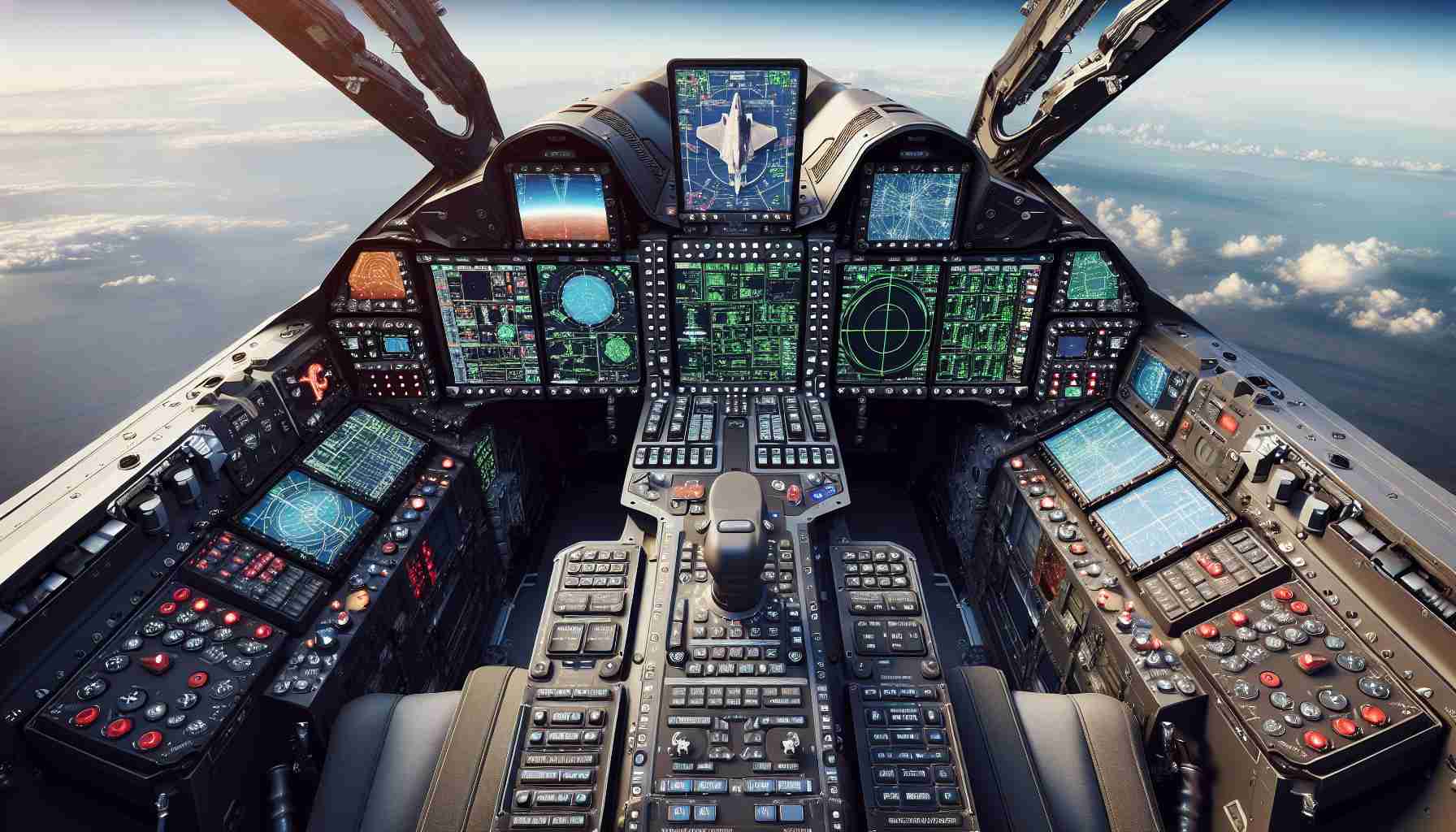The F-35 Lightning II, developed by Lockheed Martin, has garnered significant attention in both military and civilian aerospace communities. Among its many remarkable features, the cockpit, known as the “pitaja” in Finnish, stands out as a pinnacle of advanced technology. This aircraft represents a convergence of cutting-edge design and innovation, culminating in a flying command center that is a true marvel of modern engineering.
One of the most distinctive aspects of the F-35 cockpit is its Integrated Avionics System. This system brings together various subsystems into a single, seamless interface, allowing pilots to access vital information quickly and efficiently. The F-35 cockpit is equipped with a large touchscreen display that consolidates real-time data on weapons systems, sensors, and navigation, enhancing situational awareness dramatically. This design reflects a shift towards more intuitive human-machine interfaces in military aviation.
Furthermore, the F-35 incorporates sensor fusion technology, which allows the aircraft to process and integrate data from various sources, including radars, electronic warfare systems, and infrared sensors. This technology enables pilots to gain a comprehensive overview of the battlefield environment, identifying threats and targets with unparalleled clarity. The ability to sift through enormous amounts of data while filtering out irrelevant information is crucial for modern air combat.
The F-35 cockpit also emphasizes pilot safety and ergonomics. The design prioritizes the pilot’s comfort and operational efficiency, with adjustable seats, strategic placement of controls, and an advanced helmet-mounted display system. This display presents vital flight information directly within the pilot’s line of sight, reducing the need to look down at traditional flight instruments. The helmet display enhances situational awareness by projecting targeting information and sensor data, thus ensuring that the pilot can remain focused on the mission while flying.
Training for F-35 pilots also benefits from advanced technology. The use of virtual reality simulations for cockpit procedures and combat scenarios allows pilots to gain experience in a controlled environment. These simulations can mimic various flight conditions and equipment functionalities, reducing training time and increasing proficiency before pilots even set foot in the cockpit of a real F-35.
The collaboration on the F-35 project extends beyond just the United States; it includes contributions from allied nations. Countries such as Finland, which has shown interest in the F-35, are becoming part of a growing network of F-35 enthusiasts. As these nations invest in the F-35 program, the cockpit technology that embodies the “Taivaan Kaden Pitaja” becomes a symbol of international military collaboration and technological advancement.
In conclusion, the F-35 cockpit is more than just a control center; it is a technological masterpiece that represents the future of air combat. By fusing advanced avionics, intuitive human-machine interfaces, pilot ergonomics, and cutting-edge training methods, the F-35 sets a new standard for what modern military aircraft can achieve. As nations explore the potential of integrating the F-35 into their military arsenals, the cockpit will undoubtedly remain a focal point of discussion and admiration in aerospace circles worldwide.
Enhancing Your Understanding of Advanced Cockpit Technology: Tips and Facts
As we delve deeper into the world of advanced aviation technology like the F-35 Lightning II cockpit, there are numerous tips, life hacks, and fascinating insights that can broaden our understanding of this remarkable feat of engineering. Here are some practical ideas to enhance your experience and knowledge of such aerospace innovations.
1. Explore Virtual Reality (VR) Simulations: If you’re interested in aviation, many VR applications simulate flying different aircraft. These can pay homage to technologies like the F-35 cockpit. Engaging with these apps can provide insights into the complexities of modern flying and how pilots train for high-stakes environments. Check out aviation-related virtual reality experiences to gain more hands-on familiarity.
2. Stay Updated on Military Technology Trends: The realm of military aviation is ever-evolving. Subscribing to aviation and military technology magazines or websites allows you to stay informed. Look out for updates on advancements in cockpit designs and pilot training. A site like Defense News is a great resource.
3. Learn the Basics of Avionics: Understanding avionics—especially their functions in modern aircraft—can be an eye-opening experience. You might consider online courses or resources to get acquainted with terms and technologies like sensor fusion and integrated avionics systems.
4. Use Online Forums and Communities: Engage in communities such as aviation forums or subreddits focused on military aircraft. These platforms allow passionate individuals to share knowledge, ask questions, and exchange experiences related to advanced technologies like those found in the F-35’s cockpit.
5. Follow Technological Innovations: Technological advancements in military aircraft often reflect broader trends in technology. Keeping an eye on innovations in human-machine interfaces and ergonomic designs can give you insights into how these advancements could impact consumer aviation and other fields as well.
6. Attend Air Shows or Aviation Events: Participating in events or air shows can provide an up-close look at advanced aircraft and their technology. Interacting with aviation professionals and seeing aircraft like the F-35 in action can deepen your appreciation and understanding of what goes into their design and operation.
Interesting Facts to Consider:
– The F-35 program aims not just to create an advanced aircraft but to establish a whole ecosystem of support, from maintenance to pilot training, ensuring long-term operational capability.
– The helmet-mounted display system in the F-35 allows pilots an unprecedented level of information integration, projecting crucial augmented reality information directly into their line of sight.
– The integration of allied nations in the F-35 program promotes international cooperation, making it a symbol of shared defense capabilities and resources among partner countries.
In conclusion, exploring the fascinating world of advanced aviation technology offers not just a glimpse into modern military capabilities but also inspires innovation across various fields. For more insights and updates, keep engaging with reputable sources in the aviation and military sectors, such as Lockheed Martin, to stay informed about the latest developments.






















